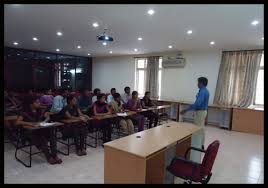





Published on Apr 02, 2024
Since the dawn of time, man has tried to record important events and techniques for everyday life. At first, it was sufficient to paint on the family cave wall how one hunted. Then came the people who invented spoken languages and the need arose to record what one was saying without hearing it firsthand.
Therefore later, more early scholars invented writing to convey what was being said. Pictures gave way to letters that represented spoken sounds. Eventually clay tablets gave way to parchment, which gave way to paper. Paper was, and still is, the main way people convey information. However, in the mid twentieth century computers began to come into general use . . .
Computers have gone through their own evolution in storage media. In the forties, fifties, and sixties, everyone who took a computer course used punched cards to give the computer information and store data. In 1956, researchers at IBM developed the first disk storage system. This was called RAMAC (Random Access Method of Accounting and Control)
Since the days of punch cards, computer manufacturers have strived to squeeze more data into smaller spaces. That mission has produced both competing and complementary data storage technology including electronic circuits, magnetic media like hard disks and tape, and optical media such as compact disks.
The demands made upon computers and computing devices are increasing each year. Processor speeds are increasing at an extremely fast clip. However, the RAM used in most computers is the same type of memory used several years ago. The limits of making RAM denser are being reached. Surprisingly, these limits may be economical rather than physical. A decrease by a factor of two in size will increase the cost of manufacturing of semiconductor pieces by a factor of 5.
Currently, RAM is available in modules called SIMMs or DIMMS. These modules can be bought in various capacities from a few hundred kilobytes of RAM to about 64 megabytes. Anything more is both expensive and rare. These modules are generally 70n, however 60ns and 100ns modules are available. The lower the nanosecond rating, the more the module will cost. Currently, a 64MB DIMM costs over $400.
All dimensions are 12cm by 3cm by 1cm or about 36 cubic centimeters. Whereas a 5 cubic centimeter block of bacterio-rhodopsin studded polymer could theoretically store 512 gigabytes of information. When this comparison is made, the advantage becomes quite clear. Also, these bacterio-rhodopsin modules could also theoretically run 1000 times faster.
In response to the demand for faster, more compact, and more affordable memory storage devices, several viable alternatives have appeared in recent years. Among the most promising approaches include memory storage using holography, polymer-based memory, and our focus, protein-based memory.
The bacterio-rhodopsin protein is one of the most promising organic memory materials. Seven helix-shaped polymers form a membrane structure, which contains a molecule known as the retinal chromophor. The chromophor absorbs light of a certain color and is therefore able to switch to another stable state in addition to its original state. Only blue light can change the molecule back to its original state.
There have been many methods and proteins researched for use in computer applications in recent years. However, among the most promising approaches, and the focus of this particular web page, is 3-Dimensional Optical RAM storage using the light sensitive protein bacterio-rhodopsin. Bacterio-rhodopsin is a protein found in the purple membranes of several species of bacteria, most notably Halobacterium halobium. This particular bacteria lives in salt marshes. Salt marshes have very high salinity and temperatures can reach 140 degrees Fahrenheit. Unlike most proteins, bacterio-rhodopsin does not break down at these high temperatures.
Early research in the field of protein-based memories yielded some serious problems with using proteins for practical computer applications. Among the most serious of the problems was the instability and unreliable nature of proteins, which are subject to thermal and photochemical degradation, making room-temperature or higher-temperature use impossible.
Largely through trial and error, and thanks in part to nature's own natural selection process, scientists stumbled upon bacterio-rhodopsin, a light-harvesting protein that has certain properties which makes it a prime candidate for computer applications. While bacterio-rhodopsin can be used in any number of schemes to store memory, we will focus our attention on the use of bacterio-rhodopsin in 3-Dimensional Optical Memories.
| Are you interested in this topic.Then mail to us immediately to get the full report.
email :- contactv2@gmail.com |